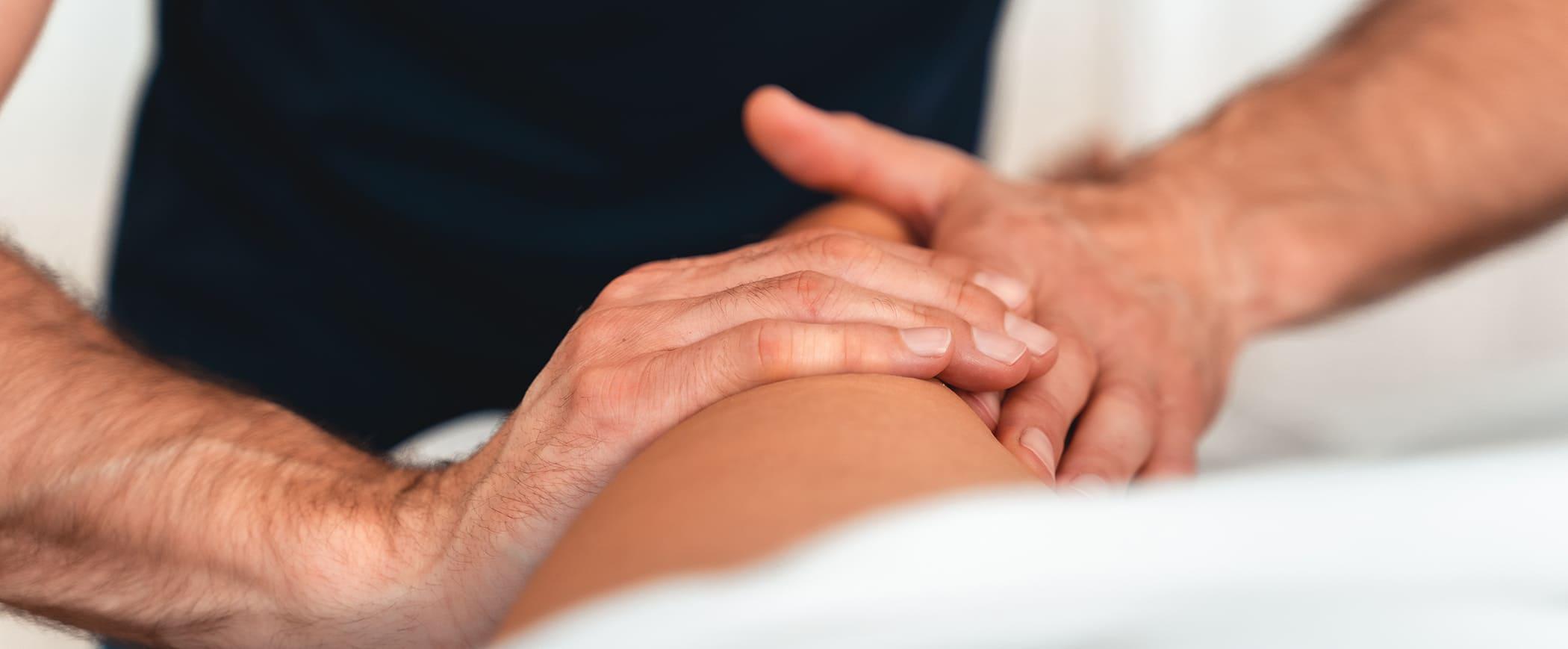Lymphatic Drainage in Zurich
They support the decongestion of the swollen tissue by gentle grips and strokes. Frequently, for example after trauma or operations, swelling due to fluid accumulation occurs. These swellings can occur because the nutrients are transported by the blood in the vascular system into the cells and tissues. Normally, the excess fluid is directed into the bloodstream via the lymphatic system. However, if drainage is obstructed, for example because lymphatic tracts have been severed during surgery or another injury obstructs lymphatic flow, the fluid accumulates in the tissue and an obstruction occurs. Ouml;deme occur particularly frequently in arms and legs. Manual lymphatic drainage activates the lymphatic system and helps the tissue to absorb and excrete the accumulated fluid into intact vessels.
AVAILABLE THERAPISTS
We couldn't find any therapist for your query
PRICES LYMPHATIC DRAINAGE
45 minutes: 115 CHF
60 minutes: 135 CHF
75 minutes: 162 CHF
90 minutes: 192 CHF
Costs covered by health insurance 50%-90%.
No prescription from a doctor is necessary.
Most supplementary insurances cover the costs of a massage. Go to our health insurance page, select your supplementary insurance and see what therapists are recognised with your insurance.
When can lymphatic drainage help?
- Swollen legs and arms due to lymph fluid
- Lipolymphödem
- Sports injuries
- Vein sway
- All orthopedic and traumatological diseases associated with swelling
- Combustions, whiplash injuries, migraine and similar diseases
- Scars
- After operations
In all the cases mentioned above it is useful if, for example, the arms and/or legs are swollen after an operation or due to prolonged lying. Manual drainage is therefore recommended after surgery on a regular basis, sometimes even daily, to stimulate the healing process. It has a supportive effect on the most congenital types of lymphoedema, because increased fat accumulation in the legs also causes the lymph to become blocked. Even after sports injuries, the healing process can be accelerated by regular applications. The lymph flow can be better drained by manual drainage and swelling is reduced more quickly. Manual lymphatic drainage is also useful in cases of venous insufficiency and all orthopedic and traumatological diseases associated with swelling. In addition, burns, whiplash injuries, migraine and similar diseases. In the case of scars it improves the mobility of the scar tissue and supports the formation of new lymphatic vessels in severed tissue.
When should no drainage treatment be done?
On no account with…
- Acute Thrombosis
- Infection
- Expressed heartbeat
- untreated malignancies
- Acute septic inflammation
- Decompensated heart failure
- (Bösartigen) Tumoren
- fever
- Developmental events with unclear genesis
- Wound rose
- cardiac Ödementia
In modified form or under certain precautions in…
- Chronic inflammation
- Expired thromboses
- hypotonia
- Thyroid function
- Pregnancy
- Asthma
In any case, manual lymph drainage should always be used in consultation with the treating physician.
OUR OFFERS
MOST BOOKED MASSAGE
Classical massage
For normal tension without severe pain, book the Classic Massage.
Medical Massage
When you suffer from acute or chronic pain book a medical massage.
Sports massage
A massage with strong pressure. It can be used for the prevention and regeneration of the body before and after workouts.
Pregnancy massage
From the first month you can come to us for massage. The treatment is adjusted to the month of pregnancy.
Myofascial release
The aim is to detach different tissue layers from each other in order to eliminate discomfort.
Trigger point therapy
Pain points in the muscle are treated, which are often perceived as punctual hardenings and trigger pain.
Deep Tissue Massage
This involves working with a lot of pressure in depth and loosening fascia and muscles.
Lymphatic Drainage
In the case of swellings that occur, among other things, after operations or weakness of the veins, pregnancy, etc., the water in the tissues is eliminated more quickly here by lymphatic drainage.
Foot reflexology massage
The entire body can be influenced and brought back into balance via the foot reflex zones.
THERAPEUTICAL MASSAGE
Dorn Therapy
Acupuncture massage
A holistic and natural pain therapy concept from Switzerland
Relaxation Massage
The therapist combines different techniques (manual & energetic) and works on all levels (body, mind, soul).
Tuina
A holistic manual therapy method from Traditional Chinese Medicine. The therapist works along energy pathways and acupuncture points.
RELAXATION MASSAGE
Relaxation Massage
You want to relax deeply and let go? Then the relaxing massage is your optimal choice.
Couples Massage
Let the two of you pamper yourselves in the same room. An ideal gift to your loved ones for a birthday, Mother's Day, birth or just to give a little relaxation.
Lomi lomi massage
A traditional Hawaiian method, known for its flowing rhythmic massage techniques, mobilizations and stretches throughout the musculoskeletal system.
Shiatsu
Shiatsu works with energy pathways, the so-called meridians. The goal is to bring the energy back to its original and perfect flow

